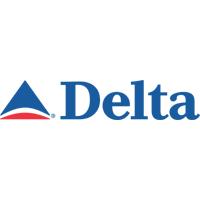 Could it be the end of the long held relationship between marketers and entertainment producers? Advertisers are shifting from television to digital media. An increasing number of marketers are using social and digital media to reach certain demographics and raise brand awareness.
Could it be the end of the long held relationship between marketers and entertainment producers? Advertisers are shifting from television to digital media. An increasing number of marketers are using social and digital media to reach certain demographics and raise brand awareness.
“Many media and entertainment subsectors have been hurt by the fall in spending for advertising, which has been driven by advertisers’ financial distress as well as viewership declines in traditional distribution channels.” – Plus Media Solutions
The Financial Times reported that online advertising spending in the US “rose sharply in the 4th quarter of 2009” and “the strong uptick from the third to fourth quarters points to the increasing prominence of online advertising.” But this isn’t the end of the long business relationship between marketers/branders and entertainment producers.
Though social media, tighter budgets, and new technological tools have influenced the shift in advertising, one advertising trend remains the same among brands and entertainment producers: product placement. 
Product placement has been an integral source of revenue and business for the entertainment industry for a long time:
- 1982 Ray-Ban signed a contract with a product placement company for $50 thousand a year to put Ray-Ban in movies and television, a year later Tom Cruise wore a pair of Ray-Bans in Risky Business and Ray-Ban sales skyrocketed
- 1982 Hershey agreed to spend $1 million promoting E.T. in the exchange for the right to use E.T. in it’s adds
- 1995 BMW paid $3 million for Agent 007 to drive a BMW Z3 Roadster in Golden Eye
- 1996 Reebok provided more than $1.5 million in merchandise, ads and promotional materials to be featured in the movie Jerry Maguire
Yet, just the other day I came across an article in the New York Times that called product placement a new shift in advertising. The reporter, Stephanie Clifford, wrote: “For the moviegoer, the shift will mean that advertising will become more integral to the movie. The change may not be obvious at first, but the devil is going to wear a lot more Prada.” I found it odd that Clifford would refer to product placement as a new shift for moviegoers, seeing as how product placement has been an advertising tactic moviegoers have dealt with for the past 28 years.
 It will be interesting to see how product placement companies react to brands’ growing interests in the new opportunities and low-cost options provided by digital media. As Randall Rothenberg, president of the Interacting Advertising Bureau (IAB.) explained: “Today, faced with myriad new opportunities, cheap tools, a global distribution medium with lowcost scale…marketers find themselves forced to find new processes or organization constructs to help.” Using digital media seems to be a lot more financially feasible than paying over $1.5 million to be in a movie (whose box office success can never be certain) considering the current economy.
It will be interesting to see how product placement companies react to brands’ growing interests in the new opportunities and low-cost options provided by digital media. As Randall Rothenberg, president of the Interacting Advertising Bureau (IAB.) explained: “Today, faced with myriad new opportunities, cheap tools, a global distribution medium with lowcost scale…marketers find themselves forced to find new processes or organization constructs to help.” Using digital media seems to be a lot more financially feasible than paying over $1.5 million to be in a movie (whose box office success can never be certain) considering the current economy.
But with all that said and even though low-cost financial incentives make the internet a safe-haven for marketers during the negative economy, I think product placement will continue to be a powerful marketing tool for a long time….I mean did anyone else notice all the VitaminWater cups, towels, and logos during the March Madness Tournament?


